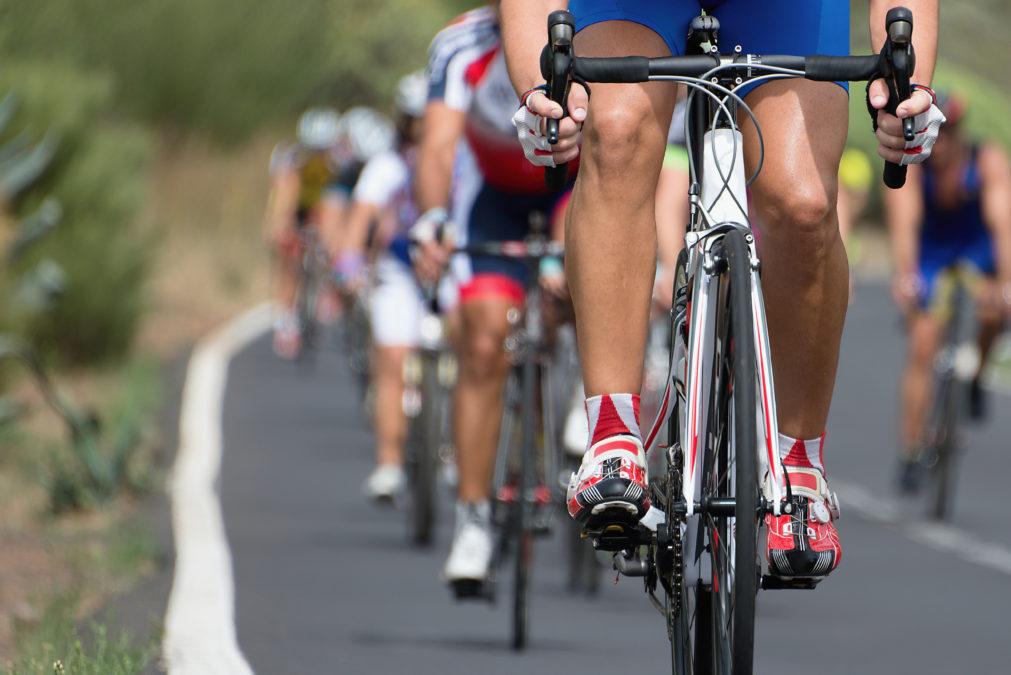
Cycling like any sport depends on a combination of mental and physical acuity. In order to get the most out of your body and to continuously improve its performance, some steps must be taken. The internet is full of countless articles which discuss how to use the right pre-cycling exercises and supplements to turn you from a beginner into Lance Armstrong in one week! However, there are only a few inalienable truths to cycling that will improve your performance overall. The rest is just anecdotal.
The key to become the best cyclist you can is to recognize that you have a limit. Everyone’s body has a limit to how well it can perform in a certain state. The purpose of training is to inch that limit higher and higher based on the capabilities of your body. To harness your best potential, you must focus on four factors: mental concentration and strength, physical readiness, pain management, and quite simply, grit. The following is a how to guide that describes each of these factors and explains how they all work together to promote improved cycling that not only allows you to harness your potential, but helps you to exceed it!
Factor #1 – Mental Concentration and Strength
Your body is a puppet, and your brain is its master. This strange but true fact is the number one hurdle cyclists must overcome in order to succeed in their training goals. The mind has all kinds of defense mechanisms that are designed to protect your body from harm. However, since things like exercise and physical training are often physically exhausting and uncomfortable, your mind is just as likely to convince your body that it should stop doing something even if it’s good for you. This is the key reason why so many gym memberships are abandoned. The discomfort of training can fool some people into believing they are somehow hurting themselves simply by getting healthier.
To combat a tricky mind, concentration is key. This does not mean ignoring real signs of physical distress such as actual pain or injury. But rather, mental strength focuses on how to set realistic goals and how to not give up until you reach them or at least until you get as close as you can to reaching them. Mental strength improves in much the same way as physical strength. Both need practice and training in order to harness their full potential.
Factor # 2 – Physical Readiness
Being physically ready to complete any tasks involves two steps. Preparing, and checking in. Start off your training regimen with a mental checklist. Ask yourself: Am I hydrated enough? Have I eaten enough, and have I eaten the right things to fuel my body to its best potential? Am I physically comfortable, and free of injury enough at the start of this exercise to see it through? Once all of the answers to these questions are “yes”, you are ready to begin cycling, not before. After you are prepared to begin, keep checking in with yourself as you ride. Good mental check-in questions include: How’s my heart rate? Is my breathing as even as it can be? Am I experiencing any discomfort that could be limiting my performance? Is this helmet about to fall off?!
These check-ins allow you to recognize problems that occur during your rides that might have a solution prior to beginning them. In the future, you will know how to anticipate issues before they occur and prevent them from slowing you down. Being aware of potential issues before they happen gives you the opportunity to focus on doing what it takes to harness more strength and stamina, instead of worrying about chafing.
Factor #3 – Pain Management
Speaking of chafing, it’s a problem that nearly everyone seems to experience at one time or another. It, in addition to muscle cramps, joint pain, and other ails are all a part of pushing your body to its maximum potential. It should be noted that discomfort and pain are not the same thing. Aching muscles after a workout are uncomfortable, but they don’t actually indicate that anything is wrong. Real pain is a sign from our brain that something is wrong, and should be acknowledged as such. Pain management is an important part of cycling training because it will occur in everyone at one point or another. The first step of managing pain is recognizing what is causing it. Chafing for example is the gradual degradation of skin due to frequent rubbing. It is incredibly painful and can stop even experienced cyclists from doing their best. There’s a few products on the market designed to prevent chafing before it happens, but one is pjuractive 2SKIN. pjuractive 2SKIN forms an invisible protective layer, which strengthens the skin’s cell structure and distributes pressure over a larger area. If chafing is your number one pain issue, there’s no reason not to just buy something to protect yourself and get back out on the road. If joint pain or cramps are the issue, there are several dietary changes that could help. Reducing your intake of wheat can limit the stress on your joints and potassium (the stuff that’s in bananas) can prevent cramps.
Factor #4 – Grit
What’s the difference between mental concentration and grit? Simple, mental concentration is what you use to avoid becoming discouraged and giving up. It’s what keeps you from becoming angry when your body decides it’s had enough when you’re so close to reaching your goal. Grit on the other hand, is what lets you harness that little burst of extra energy you didn’t know was there to keep going even after you’ve become discouraged and angry and you’ve already decided to give up. Grit isn’t something you can get from a protein powder, it’s earned from the countless hours you spend sitting on your bike hoping to go just a little faster for a little longer.